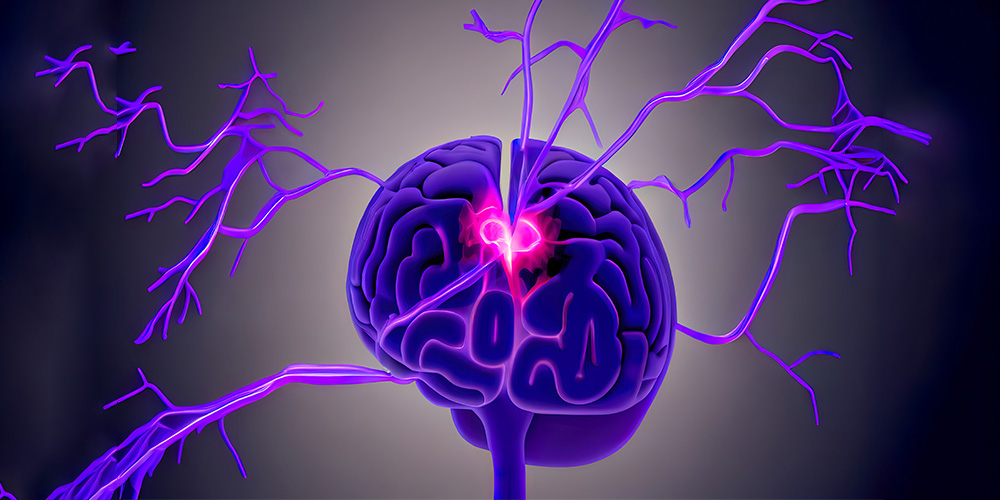Last Updated on December 3, 2024
What is Catamenial Epilepsy?
Catamenial epilepsy is a type of seizure disorder linked to hormonal changes during a woman’s menstrual cycle. This condition specifically refers to an increase in seizure frequency during particular phases of the cycle, making it unique in how it interacts with the natural hormonal rhythms of the body. The symptoms often involve heightened seizure activity due to fluctuating levels of estrogen and progesterone, which influence brain excitability.
This condition is a recognized subset of epilepsy, affecting women of reproductive age, and it requires specialized care and attention due to its close connection with hormonal cycles.
How Common is Catamenial Epilepsy & Who is at Risk?
While this type of epilepsy is relatively rare, it is estimated to affect 10–70% of women with epilepsy, depending on the criteria used to diagnose it. This wide range highlights the variability of its diagnosis and reporting.
Those at Higher Risk for Catamenial Epilepsy Include:
- Women with epilepsy who have irregular menstrual cycles
- Those with drug-resistant epilepsy
- Women with premenstrual dysphoric disorder (PMDD) or other hormonal imbalances
Patterns of Catamenial Epilepsy
Catamenial epilepsy typically follows three recognized patterns based on the menstrual cycle phases:
- Perimenstrual (C1): Increased seizures occur during the days immediately before and during menstruation.
- Periovulatory (C2): Seizure frequency spikes around ovulation, when estrogen levels are highest.
- Luteal Phase (C3): In rare cases, seizures increase during the second half of the cycle, when progesterone levels typically rise but then suddenly drop.
These patterns help clinicians identify the hormonal triggers and guide treatment.
Causes of Catamenial Epilepsy

It is mainly influenced by changes in estrogen and progesterone hormone levels.
- Estrogen: This hormone is known to have proconvulsant properties, increasing brain excitability and seizure likelihood.
- Progesterone: Known for its anticonvulsant effects, a decrease in progesterone can make seizures more frequent.
Other contributing factors include genetic predisposition, irregular ovulation, and underlying epilepsy syndromes that are already difficult to control.
Catamenial Epilepsy Symptoms
One of the main symptoms is an increase in seizure frequency during specific phases of the menstrual cycle.
Other catamenial epilepsy symptoms may include:
- Exacerbated premenstrual symptoms, including irritability, anxiety, or depression.
- Fatigue or aura sensations before seizures.
- Seizures that are resistant to standard antiepileptic medications during specific times in the cycle.
Tracking these symptoms over several months is critical for diagnosis and treatment planning.
Diagnosis of Catamenial Epilepsy
Diagnosing this condition involves a comprehensive evaluation of seizure patterns in relation to the menstrual cycle.
Steps in the diagnostic process include:
- Seizure Tracking: Patients are asked to maintain a seizure diary for at least three months, noting the timing of their seizures in relation to their menstrual cycle.
- Hormonal Assessments: Blood tests to measure hormone levels, particularly estrogen and progesterone, may be recommended.
- Electroencephalogram (EEG): EEG testing helps confirm seizure activity and rule out other causes of symptoms.
- Menstrual Cycle Monitoring: Correlating seizure patterns with ovulation and menstruation using tools like basal body temperature tracking or ovulation kits.
These combined approaches help clinicians pinpoint the cyclical nature of symptoms and determine an effective treatment strategy.
Risk Factors for Catamenial Epilepsy
Several factors increase the risk of this condition:
- Existing Epilepsy: Women with poorly controlled epilepsy are at higher risk.
- Hormonal Disorders: Conditions like polycystic ovary syndrome (PCOS) or endometriosis may exacerbate the symptoms.
- Age & Reproductive Hormones: Women in their teens or perimenopausal years may experience hormonal fluctuations that increase seizure activity.
- Medication Resistance: Some antiepileptic drugs (AEDs) may be less effective during certain phases of the menstrual cycle.
Treatment of Catamenial Epilepsy
Treating this condition involves a tailored approach to managing seizures in line with hormonal fluctuations.
Common treatment options include:
- Antiepileptic Drugs (AEDs): Adjusting the timing or dosage of AEDs to provide additional coverage during high-risk phases.
- Hormonal Therapy:
- Progesterone Supplements: Used to counteract the proconvulsant effects of estrogen.
- Oral Contraceptives: Sometimes prescribed to stabilize hormonal fluctuations.
- Dietary Interventions:
- Ketogenic Diet: High-fat, low-carb diets have been shown to reduce seizure frequency in some cases.
- Lifestyle Modifications: Stress reduction, consistent sleep, and avoiding seizure triggers are essential components of care.
- Experimental Therapies: Clinical trials are ongoing to explore novel treatments, such as neurosteroids or hormonal modulators, to address the symptoms more effectively.
Conclusion
Catamenial epilepsy is a unique form of epilepsy that highlights the complex relationship between hormones and neurological health. Recognizing its symptoms is the first step towards effective management and improved outcomes. Through a combination of medication, hormonal therapies, and lifestyle adjustments, women with this condition can lead healthier, more stable lives.
If you suspect that you or someone you know may have this condition, consult with a healthcare professional to develop a tailored care plan. The condition requires continuous monitoring, especially as hormonal levels fluctuate during life stages such as pregnancy or menopause. Hence, working closely with a neurologist and gynecologist can ensure that treatment plans are optimized for long-term care.
Moreover, with proper diagnosis and treatment, many women with catamenial epilepsy can significantly reduce seizure frequency and improve their quality of life.




